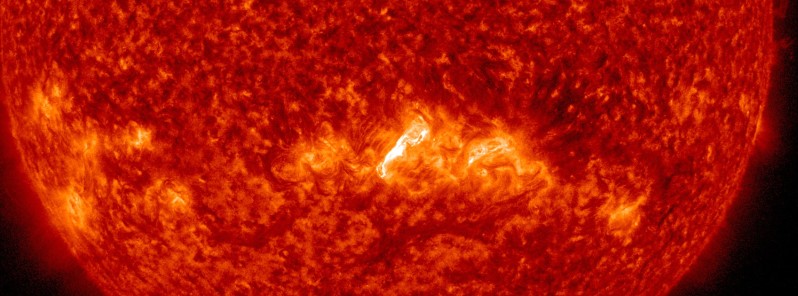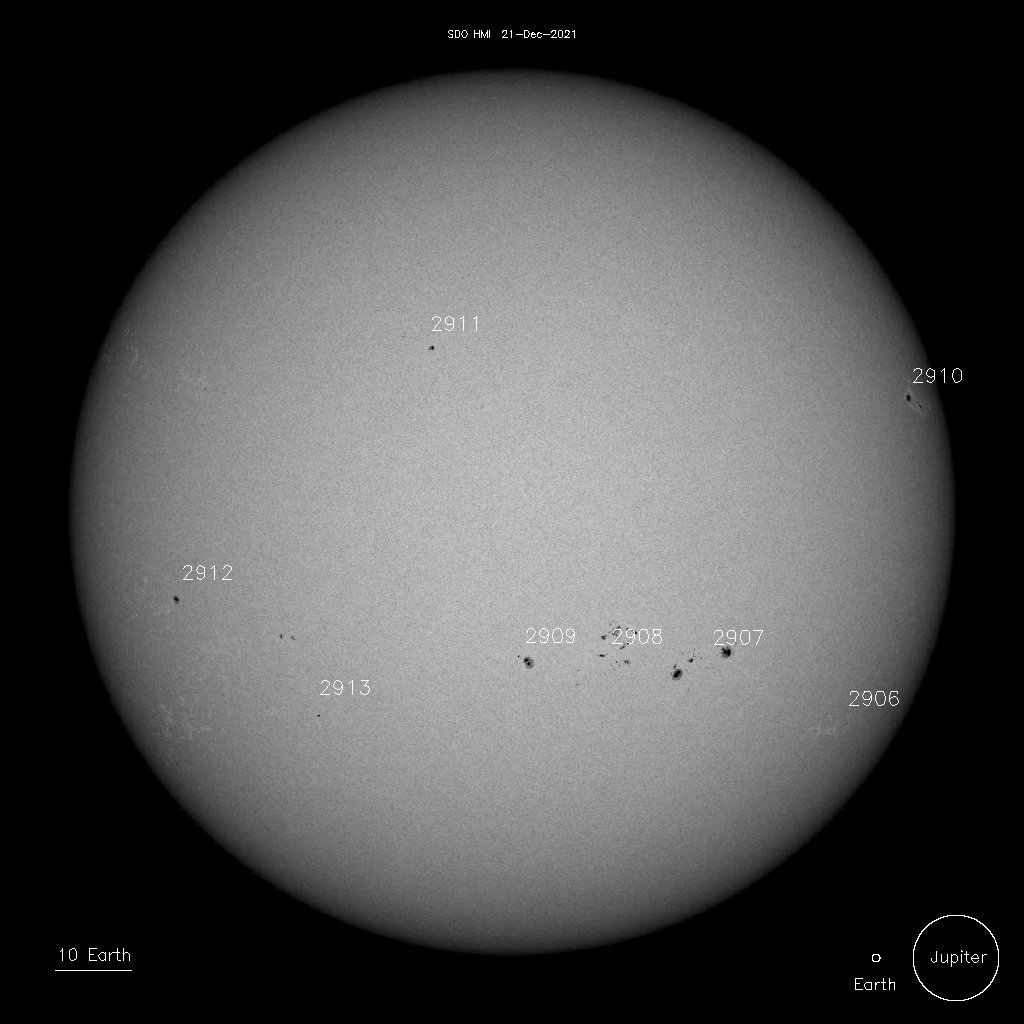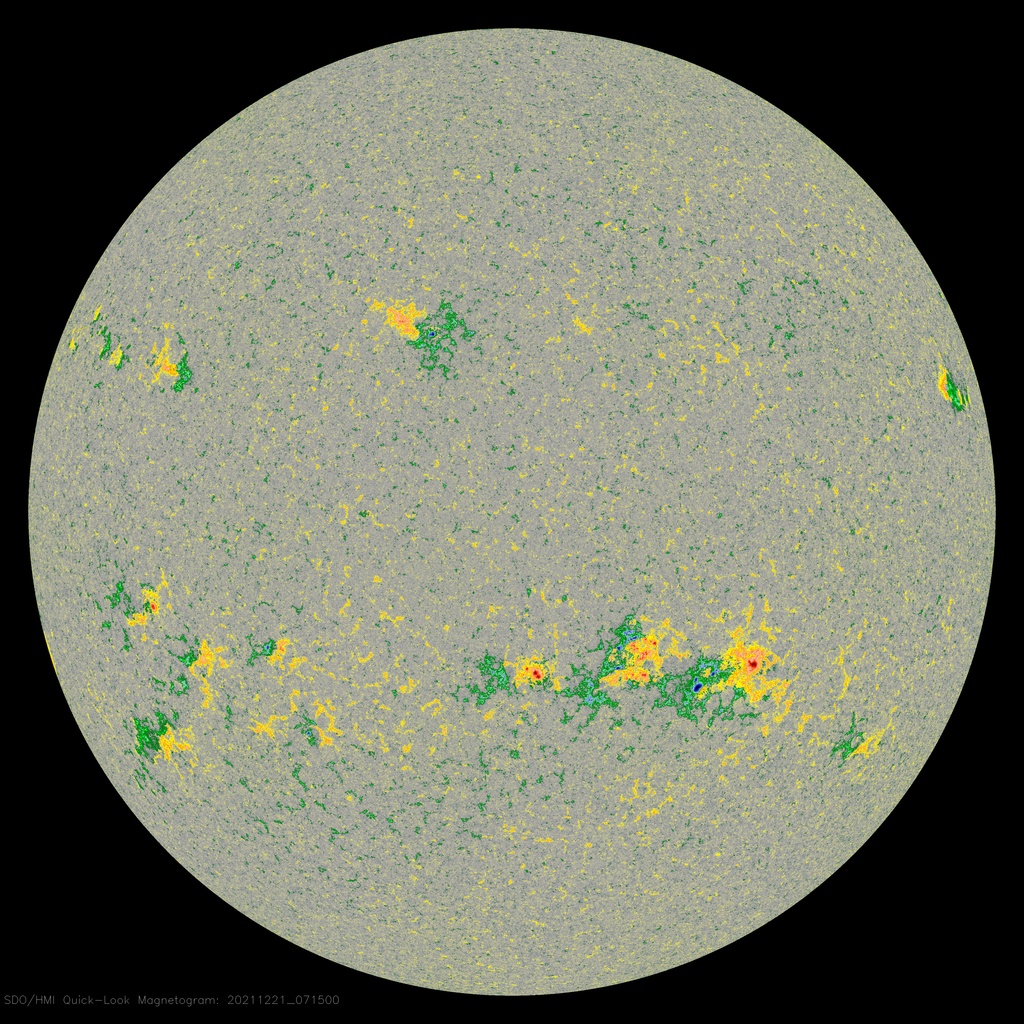CME produced by M1.8 solar flare expected to arrive at Earth as a glancing blow on December 23

Solar activity reached moderate levels over the past 24 hours with an M1.8 solar flare from AR 2908 at 11:36 UTC on December 20, 2021. Initial analysis indicated the likelihood of the northern flank arrival of associated CME on December 23.
Eight sunspot groups were present on the visible disk in 24 hours to 00:30 UTC on December 21.1
A new Active Region 2913 (S28E32, Axx/alpha) was assigned to a stable, unipolar spot. Region 2907 (S21W26, Dai/beta-gamma) grew in leader spot areal coverage, maintained some magnetic complexity – although it appeared to weaken slightly, and produced several C-class flares.
Region 2908 (S21W11, Cai/beta) increased spots, continued to undergo some decay and strengthening periods, and produced some C-class flares and the aforementioned M1.8 flare yesterday.
Region 2909 (S21E01, Cso/beta) changed little, and was the source of a C4 flare at 03:21 UTC on December 20. This CME appeared associated with a faint CME off the east limb as noted in available coronagraph imagery.
Solar wind parameters during the same period were indicative of Co-Rotating Interaction Region (CIR) passage and Coronal Hole High Speed Stream (CH HSS) influences.
The total Interplanetary Magnetic Field (IMF) strength decreased from a peak of 14 nT at 00:30 UTC on December 20 to values of 5 – 7 nT. The Bz component varied between orientations, with a few periods of pronounced southward deflection.
Solar wind speed increased as an isolated negative polarity CH HSS connected with Earth. Wind speeds reached 550 – 575 km/s, with peaks ~625 km/s. The phi angle was predominantly negative.
Elevated solar wind speed due to CH HSS influences are expected to continue through December 22, with some weakening effects on December 22 as CH HSS effects wane.
Further weakening, with speeds decreasing to ~450 km/s is likely on December 23. However, initial analysis suggests the M1.8 flare associated CME could arrive at Earth as a glancing blow later on December 23.
The geomagnetic field is expected to respond with quiet to active conditions on December 21 and 22 as CH HSS effects continue, but begin weakening on December 22.
Primarily quiet to unsettled reactions are anticipated on December 23 as CH HSS effects weaken further.
A glancing blow CME arrival later on December 23 could lead to at least active levels, with a good chance for G1 – Minor storm levels.




References:
1 Forecast Discussion – Issued: 2021 Dec 21 0030 UTC – Prepared by the U.S. Dept. of Commerce, NOAA, Space Weather Prediction Center
Featured image credit: NOAA/SWPC, SDO AIA/304

Commenting rules and guidelines
We value the thoughts and opinions of our readers and welcome healthy discussions on our website. In order to maintain a respectful and positive community, we ask that all commenters follow these rules.